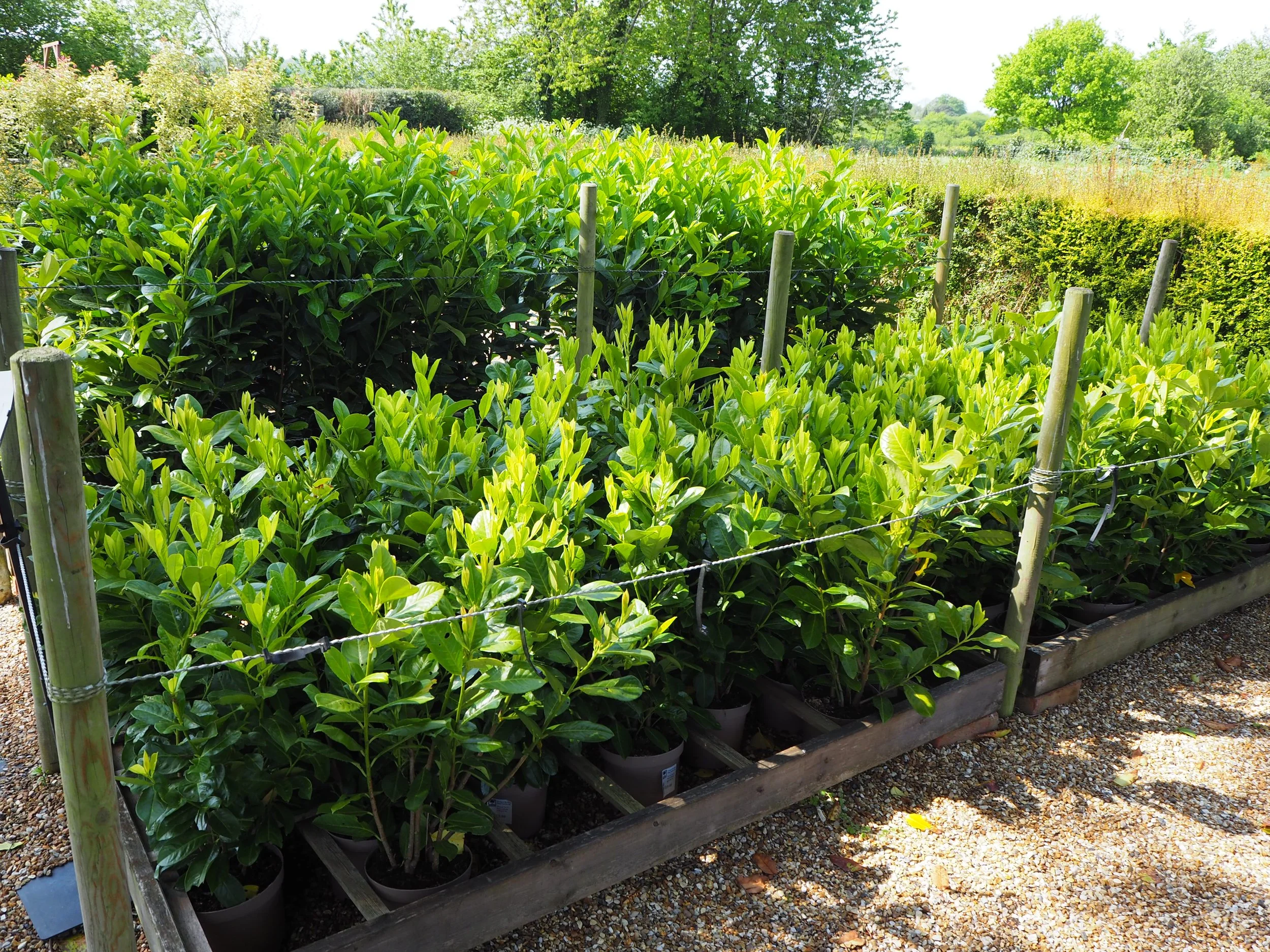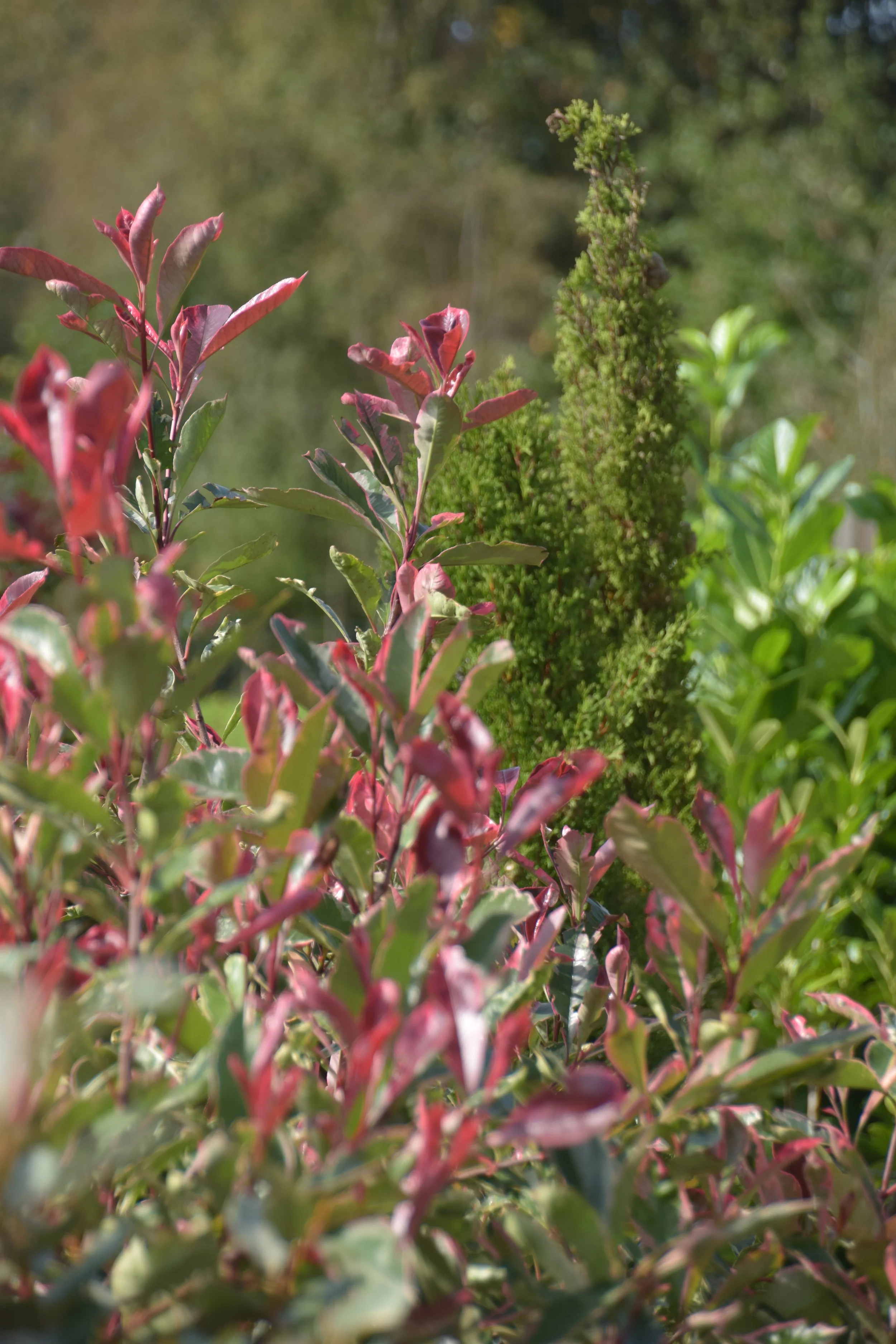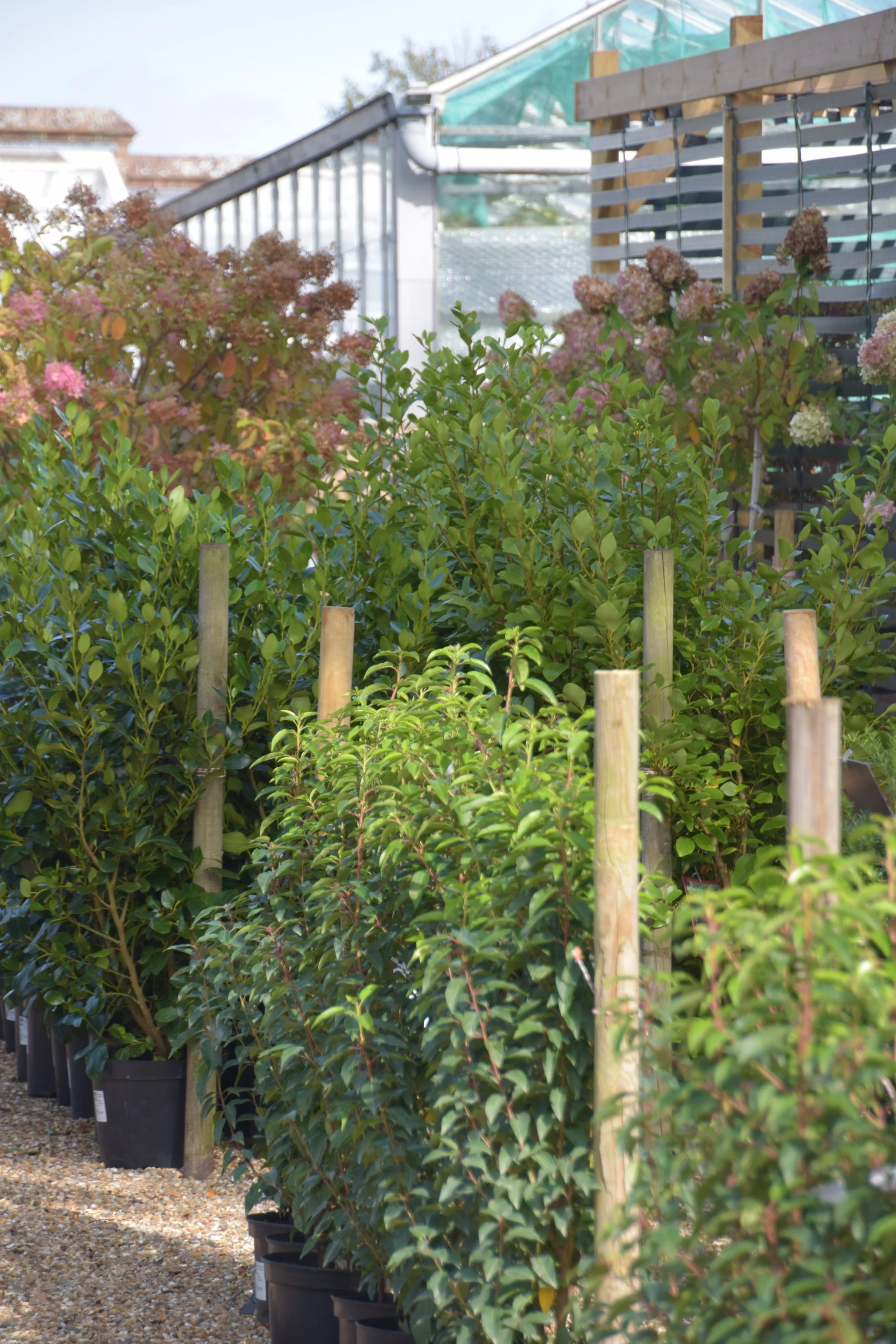
Hedging
Screening plants for an evergreen or native divide
Click to enlarge
Hedging
Whether you’re screening a boundary, dividing up different parts of the garden or just creating a attractive backdrop for a new border there are lots of different options for hedges.
We stock a range of hedging for evergreen screens or natural English hedge mixes. The largest selection is always available through autumn and winter - the best time for planting.
Bare-root whips can also be pre-ordered in early autumn for delivery when the growers have been able to ‘lift’ them (weather dependent).
Fast Growers
Cherry Laurel Prunus laurocerasus ‘Rotundifolia’ 30-60cm growth per year.
Leylandii Cupressus x leylandii 60-90cm growth per year
Both create a dense evergreen hedge and tolerate most soil conditions.
Moderate Growers
Griselinia littoralis 20-40cm per year. Creates a looser evergreen hedge with pale green or variegated foliage. Will tolerate most soil conditions and exposed sites.
Privet Ligustrum ovalifolium 30cm per year. A semi evergreen hedge with small bright green or variegated foliage. Trim twice a year to create a dense hedge. Tolerates most soil conditions.
Portugese Laurel Prunus lusitanica 30-50cm per year. Creates a dense evergreen hedge, deep green with red stems. Trim once a year if required. Tolerates most soil conditions including dry (once established).
Photinia fraseri 30-50cm per year. Trim more than once a year to encourage new red growth if required. Tolerates most soil conditions (including dry once established).
Our favourite box alternatives
Euonymus jap. ‘Green Spire’ has a neat compact habit which can be shaped. Prefers sun or partial shade. Soil should be kept moist in a very sunny site.
Pittosporum ‘Ball Series’ has a natural ball shape and a compact habit. Does not tolerate sitting under a layer of snow though!
Yew Taxus baccata creates a dense evergreen hedge and trims well to shape. Tolerates most soil conditions but doesn’t like waterlogged sites.











